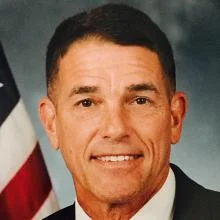Global IT spending may be on the rise, but that doesn’t mean CIOs are suddenly seeing an influx of cash in their coffers. Between maintaining and modernizing legacy systems, meeting increasing business demands, and keeping their talent happy - IT budgets are stretched. Unless money starts growing on trees, it’s unlikely that IT organizations are ever going to have a budget that covers all of those initiatives.
We caught up with four CIOs who recently won the 2018 Capital CIO of the Year ORBIE Awards to learn how they're finding money to innovate. The awards were presented by the Captial CIO Leadership Association, a professional community that annually recognizes CIOs for their excellence in technology leadership.
We asked these award-winning CIOs to share some of the creative ways they’ve reduced expenses or found money to spend on new projects. We also wanted to know how they reinvested those savings. Read on for some specifics on how these CIOs are freeing up money for new projects.
Get creative with contract negotiations
Enterprise CIO of the Year

Judith Apshago, CIO, U.S. Silica: We’ve used creative contract negotiations in various ways to create cost savings and in some cases to fund projects or additional services. With some of our larger multi-year contracts, such as network and telecom services, data center hosting, and cloud services, we were able to negotiate either a one-time or annual recurring credit to be used for new products or services, system upgrades, or to be applied to invoices.
The multi-year commitment gives us negotiation leverage and typically results in greater discounts as it guarantees the vendor a recurring revenue stream. We use that leverage to our advantage and push for additional discounts and incentives such as the built-in credit. The multi-year agreement keeps our expenses constant and the credit gives us a pool of funds to be used for unexpected and unbudgeted expenses that arise throughout the contract term.
When possible, we negotiate contracts or renewals near the vendor’s fiscal year-end when they tend to get even more creative and generous as they are trying to meet revenue or sales targets for the year. In some cases, we have used this timing to negotiate an early contract renewal and lock in lower pricing for an extended period with even greater incentives and discounts than the original contract.
We’ve used these savings in a variety of ways. With the data center credit, we were able to replace and expand our end-of-life data center storage, cover an increase in backup costs due to higher than expected data growth, and purchase consulting services to augment internal staff for some system upgrades. We used the networking and cloud hosting credits to offset invoices and pay for additional services, thus reducing our operating costs.
Become more efficient as part of your modernization efforts
Corporate CIO of the Year

Ramesh Bulusu, CIO, United Educators: At United Educators, we help our members manage their on-campus risks through our insurance products and risk management services. A key transformation project we recently took on not only helped our business stakeholders better serve our members, but also allowed us to achieve savings. The project was modernizing our policy and claims administration system. As part of the modernization, we transitioned core implementation of the system in-house and outsourced routine maintenance and support operations. These efforts contributed to an overall reduction in expenses associated with the system.
We have reinvested the savings from the program to hire new technology talent and train our existing team members. We’ve also invested those savings into new projects including data analytics and robotic process automation.
Closely review your application portfolio, implement global standards
Global CIO of the Year

Erich Windmuller, SVP & CIO, DXC Technology: Cost optimization is a core element of our IT strategy that allows us to free up funds for digital transformation. At DXC Technology, we developed a process and methodology for analyzing and rationalizing the portfolio of applications and technology required to run the business. In addition, we are moving to global standards for several critical services. These two strategies have enabled us to:
- Reduce our application footprint by 63 percent
- Reduce our infrastructure footprint by 70 percent
- Cloud-enable more than 50 percent of the enterprise
- Reduce print costs by standardizing on a single global office Managed Print Service
- Reduce wireless service costs by standardizing our global mobile phone contracts and eligibility requirements
- Reduce conferencing costs by migrating to a standard global conferencing service
- Achieve annual run rate savings of 50 percent by migrating from a legacy data warehouse to a modern data lake and business intelligence analytics service
We use this proven methodology to keep our costs under control, and we foresee further opportunities for optimization in our next fiscal year.
We reinvest savings into projects that help us drive digital transformation for DXC. Projects that improve the user experience, drive further optimization and secure the corporation receive top priority. Examples include deploying a modern, cloud-based identity and access management system that enhanced application protection and improved the user experience with single-sign-on capabilities, as well as deploying additional bot technology to make it easier for employees to find the information they need quickly. Our Office of the CIO team uses our hard-earned optimization dollars wisely so we can continue to accelerate DXC’s digital transformation to serve our employees and clients.
Tap key working groups for cost-saving ideas
Nonprofit/Government CIO of the Year

Kevin Nally, CIO, U.S. Secret Service: I have oversight of several groups that not only allow me complete insight into IT investments, but also ensures these investments align to the enterprise architecture and the mission requirements of the U.S. Secret Service. The groups include the IT Review Committee/IT Governance Board, the Enterprise Architecture Steering Group, and the new IT/Cyber Requirements Working Group, which was initiated in 2018.
The added benefit to these initiatives is that I have scored green for all 10 major systems registered in INVEST, which is the U.S. Department of Homeland Security program for tracking components' IT investments. As part of the working group’s initiative, we found that by converging networks, as well as innovative thinking, we will save or have a cost avoidance of $25 million by not having to refresh telephone switching hardware.
These savings will allow us to invest in our innovation lab and in innovative software and hardware IT products. We currently have an innovation lab where we are testing various products for cyber security enhancements (Zero Trust being one).
We have also built out a common operational picture application for situational awareness and operational protection requirements for our government-issued iPhones. We have also developed a push-to-talk application for the iPhone that interfaces with our radio infrastructure, allowing for enhanced situational awareness while conducting investigations and protection missions.
[ Want to create a sense of urgency in your IT organization? Take 5 quick steps with our Fast Start Guide: Creating a sense of urgency, with John Kotter. ]





